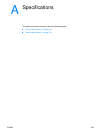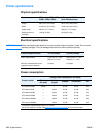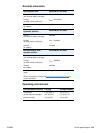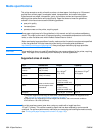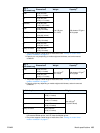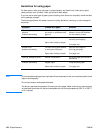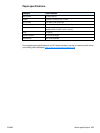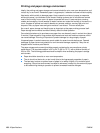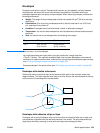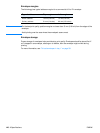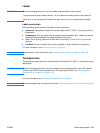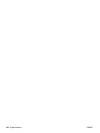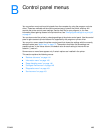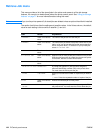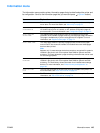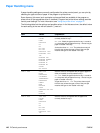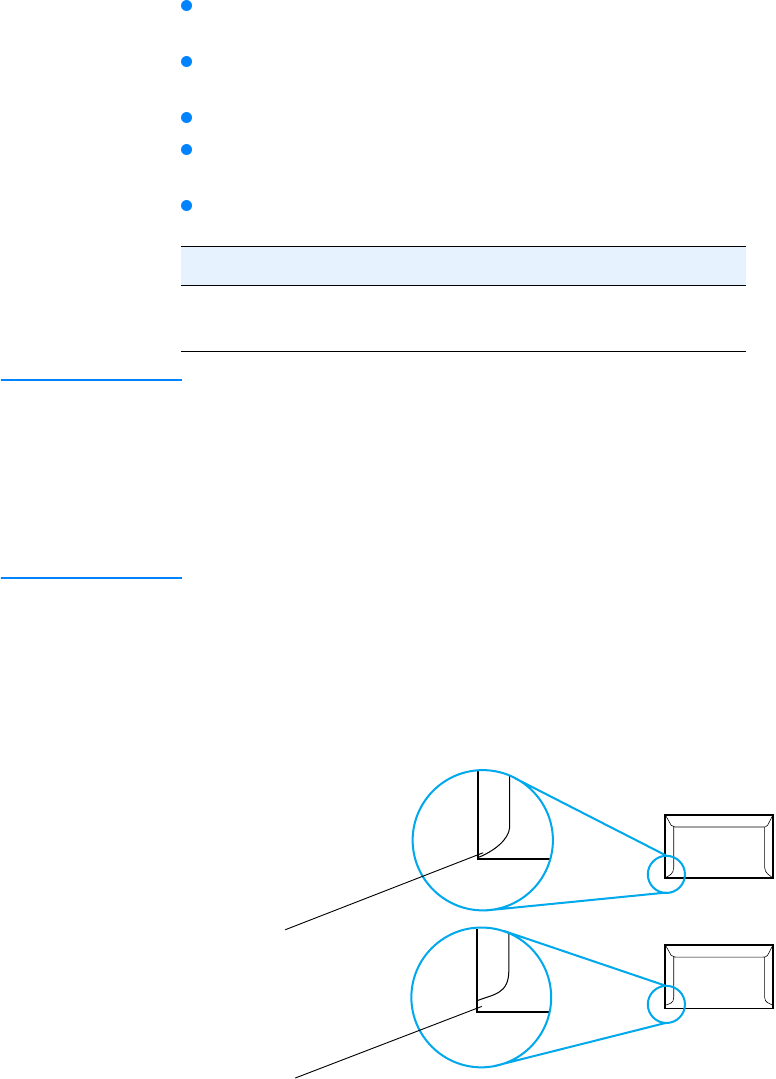
ENWW Media specifications 139
Envelopes
Envelope construction is critical. Envelope fold lines can vary considerably, not only between
manufacturers, but also within a box from the same manufacturer. Successful printing on
envelopes depends upon the quality of the envelopes. When selecting envelopes, consider the
following components:
Weight: The weight of the envelope paper should not exceed 105 g/m
2
(28 lb) or jamming
might occur.
Construction: Prior to printing, envelopes should lie flat with less than 6 mm (0.25 inch)
curl, and should not contain air.
Condition: Envelopes should not be wrinkled, nicked, or otherwise damaged.
Temperature: You should use envelopes that are compatible with the heat and pressure of
the printer.
Size: You should use only envelopes within the following size ranges.
Note Use only tray 1 to print envelopes.
You might experience some jams when using any media with a length less than
178 mm (7 inches). This might be caused by paper that has been affected by environmental
conditions. For optimum performance, make sure you are storing and handling the paper correctly
(see “Printing and paper storage environment” on page 138).
Choose envelopes in the printer driver (see “Printing by type and size of media” on page 53).
Envelopes with double side seams
Double side-seam construction has vertical seams at both ends of the envelope rather than
diagonal seams. This style might be more likely to wrinkle. Be sure the seam extends all the way
to the corner of the envelope as illustrated below.
Envelopes with adhesive strips or flaps
Envelopes with a peel-off adhesive strip or with more than one flap that folds over to seal must
use adhesives compatible with the heat and pressure in the printer. The extra flaps and strips
might cause wrinkling, creasing, or even jams and might even damage the fuser.
Tray Minimum Maximum
Tray 1 76 by 127 mm
(3 by 5 inches)
216 by 356 mm
(8.5 by 14 inches)
Correct
Incorrect



